Once again it’s time for our annual recap and look ahead regarding what’s new in trademark and branding law, and significant developments in intellectual property and entertainment law.
Following a busy 2023 for the Supreme Court, Vidal v. Elster[1] was its only trademark opinion in 2024. As noted in our recent Law360 piece[2], this case highlights trademarks vs. free speech as the Court deemed TRUMP TOO SMALL ineligible for federal trademark registration based on the longstanding statutory prohibition against registering the name of a living individual without consent. Rejecting the defendant’s first amendment political speech arguments, the Court correctly held that merchandise could still be sold under the mark in question. However, federal registration would not be available.
Having significant implications for personal branding, we then questioned whether First Amendment considerations would prevail in the future if the individual in question were not so widely-known, making this a particularly relevant ruling from a branding law perspective, or perhaps somewhat limited based on the specific fact pattern. As an interesting footnote, subsequent to the Court’s ruling, the plaintiff filed a new application with the USPTO for trumptoosmall.com for online retail services. So we’ll see whether this leads to another Trademark Office refusal and/or third-party challenge later this year.
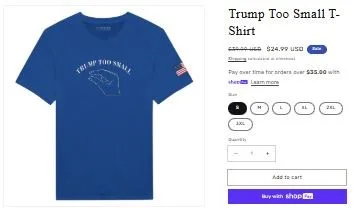 Source: www.trumptoosmall.com
Source: www.trumptoosmall.com
Another important branding law case was the Supreme Court’s landmark 2023 decision in Jack Daniel’s Properties, Inc. v. VIP Products LLC[3], as detailed in our latest Bloomberg piece[4]. Citing Jack Daniels as the basis for appeal, however, defendant Rothschild argued that the Rogers test was misapplied in this past year’s Hermes v. Rothschild [5] decision arguing that “MetaBirkin” for an NFT collection was actually permissible under Rogers. In another Bloomberg feature[6] we reported that the defendant was likening its work to Warhol’s pop art, making this an interesting test case. However, it’s likely that the District Court’s decision will be upheld because under the Jack Daniel’s interpretation of Rogers[7], corporate branding rights should prevail over any artistic expression that makes liberal use of the mark in question.
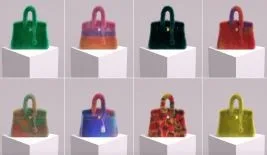 Source: Plaintiff’s Complaint, Hermes v. Rothschild – Exhibit S
Source: Plaintiff’s Complaint, Hermes v. Rothschild – Exhibit S
Interestingly-enough it was the same appellate court that relied on Jack Daniel’s when deciding in favor of the plaintiff in Vans, Inc. v. MSCHF Prod. Studio, Inc.[8] As noted in our recap from last year, the defendant’s parody street fashion shoes were deemed an infringement of plaintiff’s distinctive trade dress with the court correctly applying the Polaroid likelihood of confusion standard instead of the Rogers test. Hence, under this reasoning,“Metabirkin” still constitutes infringement of the venerable Hermès brand.[9]
In American Girl LLC v. Zembrka[10], the plaintiff doll manufacturer, brought suit against a Chinese counterfeiter. While the defendant argued lack of personal jurisdiction on grounds that it had cancelled orders after receiving notice of plaintiff’s filing, the court held that completed sales aren’t necessary for establishing jurisdiction with the original transaction itself being deemed sufficient. As a result, there should be an influx of similar cross-border actions in the Second Circuit.
Finally, Penn State v. Vintage Brand[11] was perhaps the most consequential branding law case to be decided in 2024. While the defendant argued fair use as it was merely using public domain artwork for its college-themed swag in a purely-ornamental sense and under its own brand name, the plaintiff alleged trademark infringement on the basis of Vintage Brands misleading consumers as to the source of these various goods. Despite the defendant’s disclaimers on both website and products, the jury decided in favor of Penn State on the basis that defendant’s goods utilized the name, seal design, and lion mascot, all associated with the University and likely to cause consumer confusion.
While this decision seems to runs counter to the seminal branding law opinion in Boston Hockey[12], where there was no infringement found, based on many of the same defenses raised almost fifty years later by Vintage Brands, the end-result was the same as that case was decided in favor of the plaintiff on the basis of unfair competition instead. As noted in Branding Law: Cases and Materials, defendant’s sales of mere fabric patches bearing professional sport team logos without proper licensing or prior authorization posed a significant challenge to the true essence of the brand itself, thus transcending trademark law as a whole[13].
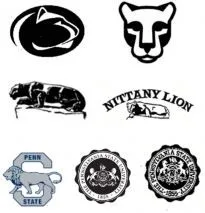 Source: Plaintiff’s Second Amended Complaint, Penn State v. Vintage Brand
Source: Plaintiff’s Second Amended Complaint, Penn State v. Vintage Brand
Copyright and Generative AI
In last year’s recap we had discussed Hanogami v. Epic Games, Inc.[14] where the video game developer was being sued for copyright infringement of dance choreography. Although the case was remanded with a new trial set to take place in 2024, the parties settled out of court, denying the rest of us an entertaining conclusion to this ‘epic’ saga.
We also covered The New York Times Company v. Microsoft Corporation et al.[15] which had been recently-filed and is now still pending. Plaintiff alleged copyright infringement through the unauthorized use of its news articles for the defendant’s training of its AI models. The New York Times should be able to meet its burden of proof having already established the use of direct excerpts of their copyrighted material in ChatGPT responses. Furthermore, they’re alleging damages based on actual subscription and advertising losses.
Another decision to watch in 2025 is Silverman v. OpenAI, Inc.[16] and the companion case Kadry v. Meta.[17] Both were filed as class actions by a well-known comedian and other authors against each generative AI defendant for the unauthorized use of various original textual materials. Although the court dismissed the plaintiff’s copyright infringement claims early last year on the basis of insufficient evidence, along with an inadequate showing of resulting financial loss, the plaintiff’s unfair competition claims were sustained. In short, the court agreed that the defendant’s unauthorized use of the copyrighted works were “unfair” without rising to the level of copyright infringement per se.
Similarly, in Getty Images v. Stability AI,[18] the plaintiff claimed copyright infringement of original photographic images, and in Concord Music Group Inc v. Anthropic PBC[19], several music publishers brought suit against another generative AI startup for the unauthorized use of copyrighted song lyrics. And in the companion cases of UMG Recordings Inc v. Suno Inc.[20] and UMG Recordings Inc v. Uncharted Labs Inc. d/b/a Udio.com.,[21] various record labels are facing off against a couple of startups, claiming infringement of copyrighted sound recordings for defendants’ training of AI models for the creation of music.
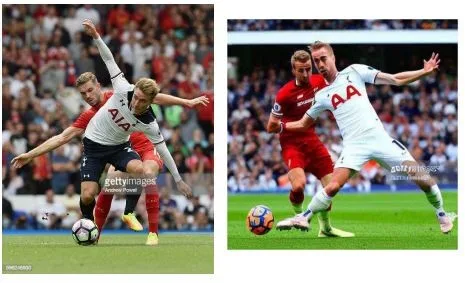 Source: Plaintiff’s Complaint, Getty Images v. Stability AI
Source: Plaintiff’s Complaint, Getty Images v. Stability AI
In yet another recent class action filing, the plaintiffs in Lehrman v. Lovo, Inc.[22] relied on several theories, including copyright infringement, false advertising, unfair competition, and right of publicity law against the defendant’s use of well-known voices without authorization for generative AI narration. Once again, the defendant is alleging fair use, despite brazenly offering “Ariana Venti”, “Joe Rogaine” and “Barack Yo Mama”, among others, as celebrity-cloned voices. Midler v. Ford Motor Co.,[23] holding in favor of the plaintiff recording artist on the basis of publicity rights in her singing voice for an unauthorized advertising ‘sound alike’ should be controlling here, at least in regard to the right of publicity claim. However, the defendant may attempt to argue that its generative AI is merely taking snippets of speaking voices for the creation of original narrations, making this a potentially-significant decision in the field of personal branding.
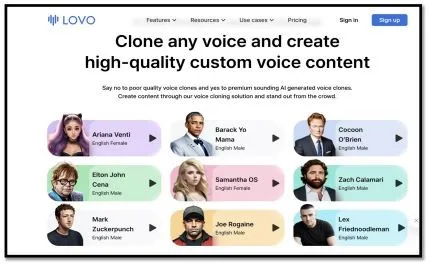 Source: Plaintiff’s Complaint, Lehrman v. Lovo, Inc.
Source: Plaintiff’s Complaint, Lehrman v. Lovo, Inc.
Some of these cases should be decided later this year, shedding vital light on transformative fair use and unfettered access to information relative to the proprietary rights of content creators. Our forthcoming piece, AI at the Crossroads of IP will be providing more in-depth discussion and analysis once these various decisions are rendered and a defined legal doctrine begins taking shape.
Speaking of fair use, Hachette Book Group Inc. et al. v. Internet Archive[24] is an interesting case in the non-AI realm with a variety of book publishers suing the online digital library for copyright infringement, and the court rejecting a fair use defense even though the defendant is a non-profit entity, having acquired its collection of digital holdings through donations or purchase. However, the court correctly held that the defendant’s scanning of the books in question was not transformative under the fair use doctrine.
Entertainment and Media Law
Now turning to entertainment and media, after successfully fighting off a copyright challenge from Marvin Gaye’s estate in a widely-publicized case that we had discussed in our previous retrospective, Ed Sheeran prevailed once again this past year against an entity that owns royalty interests for the work in question in Structured Asset Sales, LLC v. Sheeran.[25] Consistent with the “Stairway to Heaven” decision[26] as covered in our 2020 recap[27], the appellate court refused to consider the “Let’s Get it On” sound recording from 1973, limiting evidence to just the sheet music, consistent with pre-1976 copyright law.
Gaye’s estate had fared much better in Williams v. Gaye,[28] as referenced above, when the jury was allowed to hear some of Gaye’s “Got to Give it Up”, originally released in 1977. Of course, that decision remains controversial to this day as Gaye’s estate was arguably relying more on a general similarity of musical “feeling” between the songs rather than making a convincing showing of shared musical elements. In this later decision, however, the court specifically held that common musical building blocks, such as syncopation and basic chord progressions, lack sufficient originality under copyright law and cannot be considered exclusive to any one party.
Similarly, it was just this past year in Gifford v. Sheil[29] when one social media influencer sued another for copying the “neutral, beige, and cream aesthetic of Plaintiff’s brand identity…” In other words, by relying on an individual’s personal “style”, rather than more traditionally copyrightable subject matter, the plaintiff is attempting to breach the long-established idea-expression dichotomy that’s fundamental to U.S. copyright law and first set forth in Baker v. Selden,[30] the landmark Supreme Court decision dating back to 1879.
While probably less relevant to personal branding than the plaintiff would like us to believe, this case should be notable if it successfully stretches the limits of copyright as applied to social media influence. It’s unfortunate that right of publicity in Texas is only available post-mortem as economic and dignitary tort interests would have been worth exploring here. However, the plaintiff is far more likely to prevail on the basis of unfair competition and other business interest torts as opposed to infringement of copyright and trade dress, both of which seem to be lacking in factual or legal basis, at least under traditional IP standards. So this is certainly one to watch.
 Source: Plaintiff’s Complaint, Gifford v. Sheil – Exhibit A
Source: Plaintiff’s Complaint, Gifford v. Sheil – Exhibit A
Meanwhile, in Griner et al. v. King et al.,[31] the copyright owner of a photo that inspired a popular meme known as the “Success Kid” successfully defeated a politician’s fair use defense due to said unauthorized use being deemed commercial and less likely to be considered transformative under the recent Supreme Court decision in Andy Warhol Foundation v. Goldsmith,[32] which we had reported on in the Bloomberg feature referenced above. As we opined in another piece at the time, “The court appears to be merely offering its own narrow interpretation of how a transformative work is to be defined, within the confines of this particular case only”.[33] Yet, it now appears that Warhol v. Goldsmith may have wider reach than initially expected.
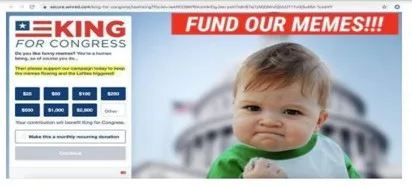 Source: Plaintiff’s Complaint, Griner et al. v. King et al.
Source: Plaintiff’s Complaint, Griner et al. v. King et al.
Next, in an opinion released middle of last year, SCOTUS upheld the ‘discovery accrual rule’ in a copyright infringement case, allowing a music producer to recover damages dating back more than three years before the initial lawsuit filing in Warner Chappell Music Inc. et al. v. Sherman Nealy et al.,[34] despite expiration of the statute of limitation period for such claims. In other words, under the Copyright Act, when a plaintiff first discovers the infringing action is considered controlling, rather than when the infringement actually occurred. And there is no separate time limit on when damages can be recovered. While initially seeming contradictory to the strict application of the statute of limitations denying co-authors credit to Frankie Lymon’s hit song in Merchant v. Lymon,[35] the discovery accrual rule wasn’t at issue in that particular case, making the Court’s opinion here clearly distinguishable.
Finally, although more a trademark case than entertainment law per se, Earth Wind & Fire IP, LLC v. Substantial Music Grp.[36] involved the unauthorized use of the icon band’s name by their ex-guitarist while performing with a tribute band under the names “Earth Wind & Fire Legacy Reunion,” “The Legacy Reunion of Earth, Wind & Fire,” and “Legacy Reunion of Earth Wind & Fire Alumni”. While the plaintiff alleged trademark infringement, the defendant argued fair use under New Kids on the Block v. News Am. Publ’g, Inc.[37]
However, the court correctly held in favor of plaintiff on the basis of defendant’s use suggesting a connection or endorsement by the original band and trademark owner. While we now know that including a disclaimer may not be considered adequate, based on our discussion of the Penn State trademark ruling above,[38] this court might have held differently had the defendant’s advertising not been as blatantly misleading. Nominative fair use is only a viable defense when there’s necessary and descriptive but non-commercial reference being made to the trademark in question, as set forth in New Kids on the Block and further outlined in the context of various landmark parody decisions in our 2023 Bloomberg piece.[39]
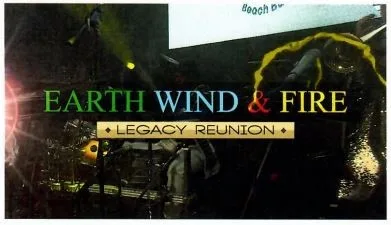 Source: Plaintiff’s Complaint, Earth Wind & Fire IP, LLC v. Substantial Music Grp.
Source: Plaintiff’s Complaint, Earth Wind & Fire IP, LLC v. Substantial Music Grp.
Public Domain Watch
For the past two years we’ve been reporting on the expiration of the ninety-five year copyright term for major artistic creations with a special focus on branded properties. And no annual retrospective would be complete without a look at endangered characters for the coming year. First we had the original Winnie the Pooh and Bambi and then the earliest appearance of Mickey Mouse also falling into the public domain this past year.
Looking ahead to the next twelve months, Popeye the Sailor Man and the more familiar white-gloved Mickey Mouse will be losing their copyrights dating back to 1929.[40] Although this will lead to the appearance of various parodic works and unlicensed merchandise all being produced without the need for licensing by the respective copyright owners, Disney and others should be able to enforce their trademark rights for years to come as long as they’ve successfully registered design marks with the USPTO covering the character images in question and the relevant goods or services are considered related.
 Source: The Karnival Kid (1929)
Source: The Karnival Kid (1929)
Trade Regulation and Antitrust
Circling back to the somewhat more mundane world of trade regulation, we had discussed United States v. Google LLC[41] in last year’s retrospective as the DOJ was pursuing a federal antitrust action against the Internet search behemoth, alleging an illegal monopoly on advertising technology. In August of 2024, the court ruled that the defendant was engaging in anti-competitive behavior by entering into exclusive agreements establishing Google as the default search engine, thus resulting in increased prices for search engine advertising. However, an appeal is expected along with an extended legal battle. Likewise, the FTC will be pursuing claims of monopolization of social media against Meta Platforms in Federal Trade Commission v. Meta Platforms, Inc.,[42] stemming from the defendant’s acquisition of Instagram and WhatsApp, formerly Facebook’s main competitors.
USPTO Rulemaking
Finally, the long-awaited patent and trademark fee increases[43] have recently been implemented, the first of their kind since 2021, as originally reported in our preview article from that year[44], and designed to promote greater efficiency with lower application pendency. Review times have finally started to decrease in 2024. And hopefully these new measures will continue that positive trend.
So as we now begin approaching the quarter century mark, these are all worthwhile resolutions, indeed!
[1] Vidal v. Elster, 602 U.S. 286 (2024).
[2] William Scott Goldman, What High Court TM Opinions Tell Us About Free Speech, Law360 (July 24, 2024).
[3] VIP Prods. LLC v. Jack Daniel’s Props., 953 F.3d 1170, 1172 (9th Cir. 2020).
[4] William Scott Goldman, Recent Trademark Parody Cases & 2023 Case Preview, Bloomberg Law (January, 2023).
[5] Hermes Int’l v. Rothschild, 678 F. Supp. 3d 475 (S.D.N.Y. 2023).
[6] William Scott Goldman, Non-Fungible Tokens and Intellectual Property, Bloomberg Law (March, 2022).
[7] Rogers v. Grimaldi, 875 F.2d 994 (2d Cir. 1989).
[8] Vans, Inc. v. MSCHF Prod. Studio, Inc., 602 F. Supp. 3d 358 (E.D.N.Y. 2022).
[9] William Scott Goldman, Recent Developments in Trademark and Branding Law, Small Biz Club (January, 2024).
[10] American Girl, LLC v. Zembrka, No. 21-1381 (2d Cir. 2024).
[11] The Pa. State Univ. v. Vintage Brand, LLC, 715 F. Supp. 3d 602 (M.D. Pa. 2024).
[12] Boston Pro. Hockey Ass’n v. Dallas Cap E, 510 F.2d 1004 (5th Cir. 1975).
[13] William Scott Goldman, Branding Law: Cases and Materials (2d ed. 2020).
[14] Hanagami v. Epic Games, Inc., 85 F.4th 931 (9th Cir. 2023).
[15] The New York Times Company v. Microsoft Corporation et al, 1:23-cv-11195 (S.D.N.Y. Dec. 27, 2023).
[16] Silverman v. OpenAI, Inc., N.D.Cal., 3:23-cv-03416 (N.D. Cal. Jul. 7, 2023).
[17] Kadrey v. Meta Platforms, Inc., 23-cv-03417-VC (N.D. Cal. Nov. 20, 2023).
[18] Getty Images (US), Inc. v. Stability AI, Inc., 1:23-cv-00135, (D. Del. Feb. 3, 2023).
[19] Concord Music Group, Inc. v. Anthropic PBC, 5:24-cv-03811, (N.D. Cal. Oct. 18, 2023).
[20] UMG Recordings, Inc. v. Suno, Inc., 1:24-cv-11611, (D. Mass. Jun. 24, 2024).
[21] UMG Recordings, Inc. v. Uncharted Labs, Inc., 1:24-cv-04777, (S.D.N.Y. Jun. 24, 2024).
[22] Lehrman v. Lovo, Inc., 1:24-cv-03770, (S.D.N.Y. May 16, 2024).
[23] Midler v. Ford Motor Co., 849 F.2d 460 (9th Cir. 1988).
[24] Hachette Book Group, Inc. v. Internet Archive, 23-1260, (2d Cir. Sep. 04, 2024).
[25] Structured Asset Sales, LLC v. Sheeran ATV, LLC USA, No. 23-905 (2d Cir. 2024).
[26] Skidmore v. Zeppelin, 952 F.3d 1051 (9th Cir. 2020).
[27] William Scott Goldman, 2020 Vision: Counting Down The Top Intellectual Property, Entertainment And Branding Law Decisions From This Past Year, GOLDMAN LAW GROUP: BLOG, https://goldmanlawgroup.com/blog (last visited, Jan. 15, 2025).
[28] Williams v. Gaye, 895 F.3d 1106 (9th Cir. 2018).
[29] Sydney Nicole LLC, & Sydney Nicole Gifford v. Alyssa Sheil LLC, & Alyssa Sheil, No. 1:24-CV-00423-RP, 2024 WL 4923847 (W.D. Tex. Nov. 15, 2024).
[30] Baker v. Selden, 101 U.S. 99 (1879).
[31] Griner v. King for Congress, No. 23-2117 (8th Cir. 2024).
[32] Andy Warhol Foundation v. Goldsmith, 598 U.S. 508 (2023).
[33] Robert Carnevale, Big AI Implications Lurk in the Supreme Court’s Andy Warhol Verdict, Yahoo Entertainment (May 18, 2023).
[34] Warner Chappell Music Inc. et al. v. Sherman Nealy et al., 601 U.S. __ (2024).
[35] Merchant v. Lymon, 828 F. Supp. 1048 (S.D.N.Y. 1993).
[36] Earth Wind & Fire IP, LLC v. Substantial Music Grp., 1:23-cv-20884-FAM (S.D. Fla. Oct. 16, 2023).
[37] New Kids on the Block v. New America Pub, 971 F.2d 302 (9th Cir. 1992).
[38] See supra note 11.
[39] See supra note 4.
[40] https://web.law.duke.edu/cspd (last visited Jan. 15, 2025)
[41] United States v. Google LLC,, No. 20-cv-3010, 2024 WL 3647498 (D.D.C. Aug. 5, 2024).
[42] Federal Trade Commission v. Meta Platforms, Inc., 1:20-cv-03590, (D.D.C. Dec 09, 2020).
[43] Setting and Adjusting Trademark Fees During Fiscal Year 2025, 37 Fed. Reg. Parts 2 and 7 (Nov. 18, 2024).
[44] William Scott Goldman, 2021 In the Law; or, It Only Gets Better from Here – A Brief Look Ahead, GOLDMAN LAW GROUP: BLOG, https://goldmanlawgroup.com/blog (last visited, Jan. 15, 2025).


